Tom's Hardware Verdict
The Razer Naga Pro is an amazing MMO mouse with a ton of configuration options, thanks to three hot-swappable button layouts. Add in Razer's excellent configuration software and you have a mouse that morphs to meet nearly any challenge.
Pros
- +
Swappable side panels
- +
Easy gaming performance customization
- +
Strong Razer software
Cons
- -
12-button layout lacks differentiation between keys
- -
Less RGB with two or six-button layouts
- -
Expensive
Why you can trust Tom's Hardware
The original Razer Naga was purpose-built for MMOs. Released back in August 2009, it offered a total of 17 buttons, allowing you to have every spell, strike and macro at your fingertips. The Naga Hex followed in 2012, dropping the 12 side buttons down to six, for games like Diablo 3 or League of Legends. Finally, there was the Razer Naga Trinity, which offered three swappable side panels, letting you switch between a standard two-button arrangement, the Hex's seven-button configuration or the distinct Naga 12-button layout. Until today, we considered the Naga Trinity the best gaming mouse for MMO players. Now, there’s a new contender.
The new Razer Naga Pro is the followup to the Trinity and a slight refinement of everything the Naga line has represented to this point. Alongside the swappable side plate, you get three connectivity options, including two wireless ones, and the latest in Razer mouse technology. The result is a mouse that you can use for nearly anything, backed by software that lets players truly customize everything about their experience. There are still some small issues, such as a high $150 price tag, but the Naga Pro is simply an excellent offering from Razer.
Razer Naga Pro Specs
| Sensor Type | Optical | Row 0 - Cell 2 |
| Sensor Model | Razer Focus+ Optical Sensor | Row 1 - Cell 2 |
| Sensitivity | 20,000 CPI | Row 2 - Cell 2 |
| Polling Rate | 1,000 Hz | Row 3 - Cell 2 |
| Programmable Buttons | Up to 19 | Row 4 - Cell 2 |
| LED Zones | 3x RGB | Row 5 - Cell 2 |
| Connectivity | 2.4 GHz USB Type-A dongle (Razer HyperSpeed), Bluetooth, USB Type-A | Row 6 - Cell 2 |
| Cable | 6 feet (1.8m) USB Type-A | Row 7 - Cell 2 |
| Measurements (LxWxH) | 4.69 x 2.93 x 1.69 inches (119 x 74.5 x 43mm) | Row 8 - Cell 2 |
| Weight | 4.12 ounces (116.5g) | Row 9 - Cell 2 |
| Software | Razer Synapse 3 | Row 10 - Cell 2 |
Design
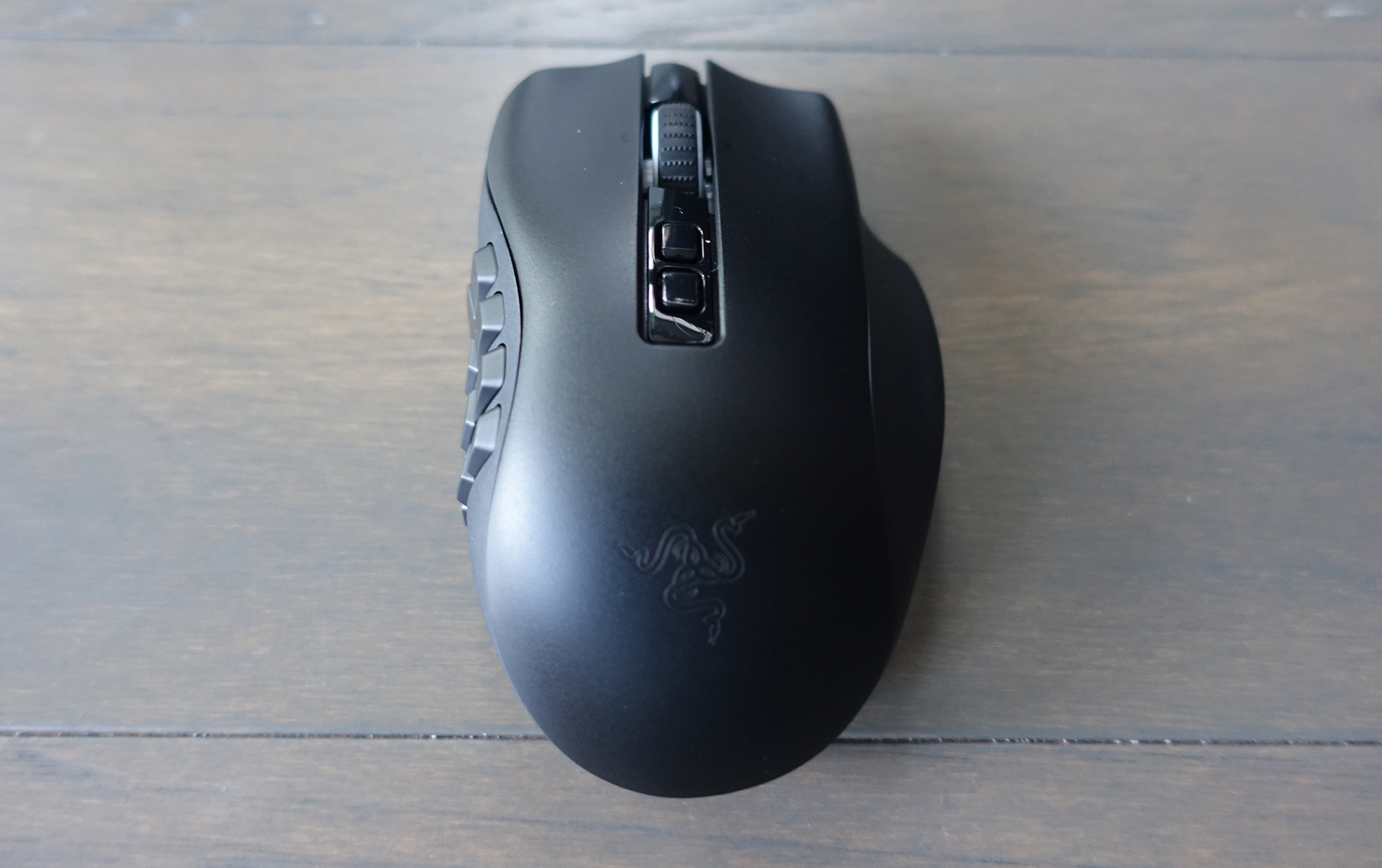

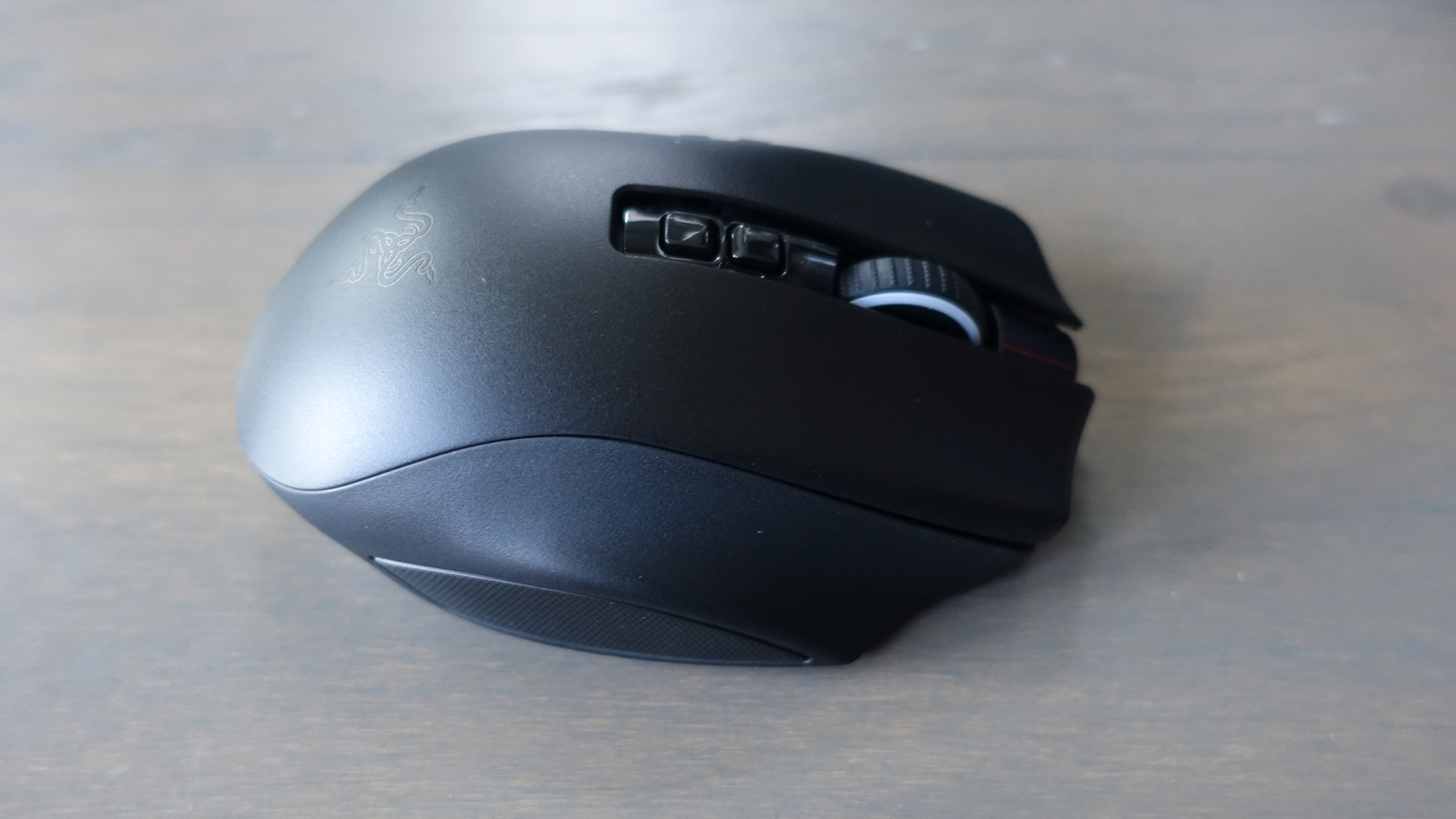
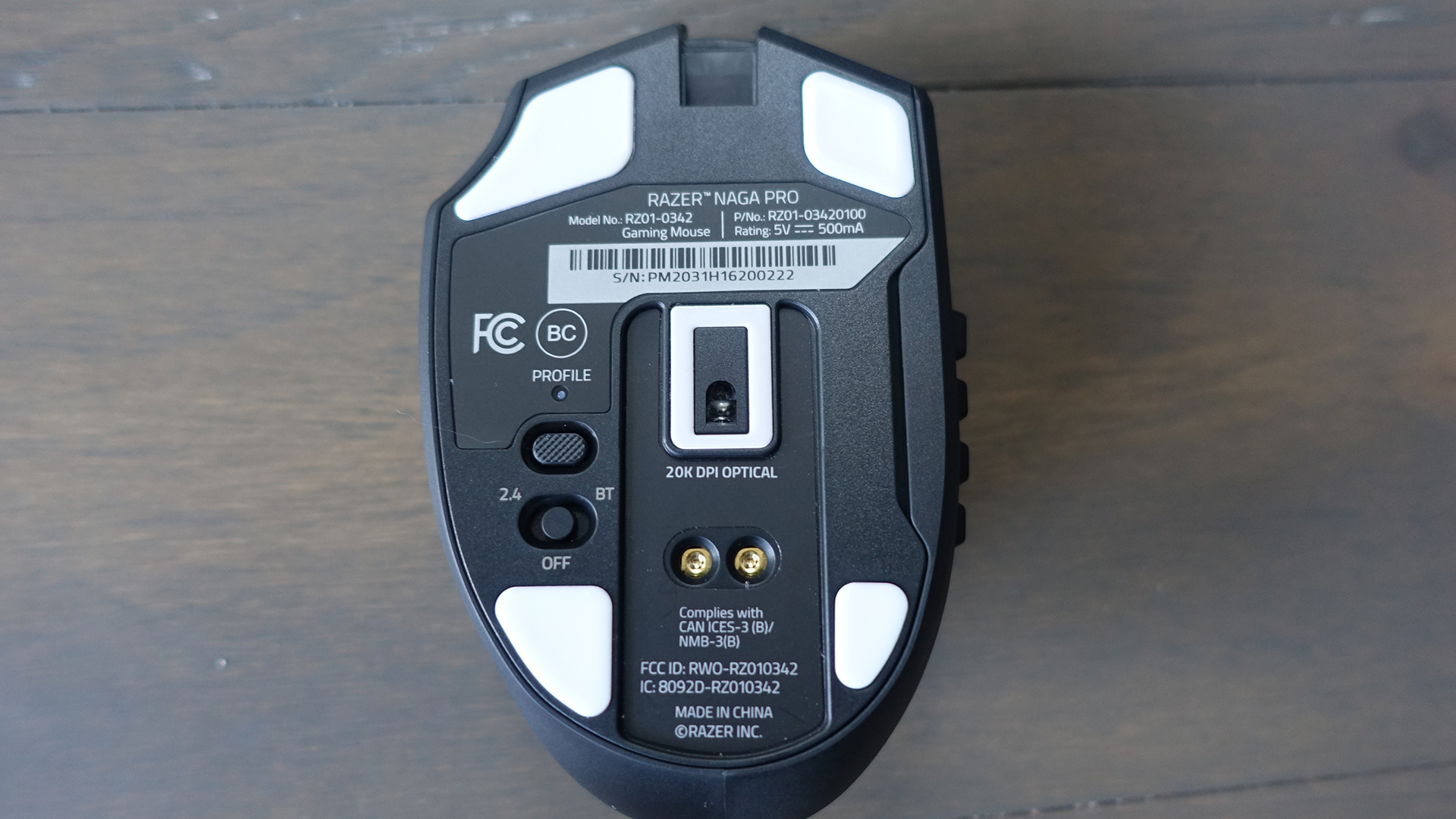
The basic shape of the Razer Naga Pro hasn't changed much from its immediate predecessor, the Razer Naga Trinity. This is a right-handed mouse with a more prominent slope on the left side to accommodate the 12-button MMO configuration. There's a textured scroll wheel in the center with a tactile scroll to it (there's no way to change it to a free scroll). Further to the rear are the DPI sensitivity buttons, which are more recessed over the versions found in the Naga Trinity. This means you're less likely to hit them unless you really want to, which is a boon. The entire thing is encased in a slightly textured matte plastic with a premium feel to it.
The included 6-foot cable is braided, specifically Razer Speedflex that fights drag with extra flexibility. Once the cable’s plugged in, the Naga Pro looks like its wired predecessor.
On the bottom of the Naga Pro, you have four 0.8mm-thick PTFE feet preventing the buttons on the underside from contacting your mouse pad or desktop. Those buttons include a profile change button, which is one of few that can't be programmed in Razer's software, and a switch that changes the mouse from wired mode to the 2.4 GHz Razer HyperSpeed dongle (USB Type-A) or Bluetooth options. There are also two gold pegs for the connection for charging on any modern Razer mouse dock.
Razer isn't the only company with MMO mice, and one of the major issues of all of them is button differentiation: With 12 buttons under your thumb, it can be hard to hit the right one. Razer misses the mark here. There's some differentiation in the angle and height of the buttons, and you can feel that your thumb is supposed to sit over the 5 and 8 keys, but this should be more pronounced. The Logitech G600 is much better in terms of varying angles, while Corsair's Scimitar RGB Elite went with textured surfaces on certain columns.
The six-button side plate is sort of a change for Razer. The Naga Hex started with a six-button layout in a hex, hence the name. Later versions, including the Naga Trinity, moved to a seven-button layout in a circle. The Naga Pro brings us back to a six-button configuration, but the layout is completely different; there are two rows of three buttons, with each button having a fairly pronounced depth. There's no other Razer mouse with six buttons on the side in this style, and the design seems almost directly pulled from the Logitech G604 or G602. I'm not complaining, mind you, as it's very easy to tell the difference between every button. Great artists steal.
Finally, there's the two-button side panel. There's not much to say here. You get two sizable buttons above a textured pad for your thumb. It's here for times you’re in pure productivity mode.
Like the Trinity, the Naga Pro has full Razer RGB lighting, controlled by the Razer Synapse software. This light comes on three areas: the mouse wheel, Razer logo, and on the twelve-button side panel. The two and six-button plates have no lighting at all, which is a shame because there was RGB lighting on the Trnity’s seven-button panel.
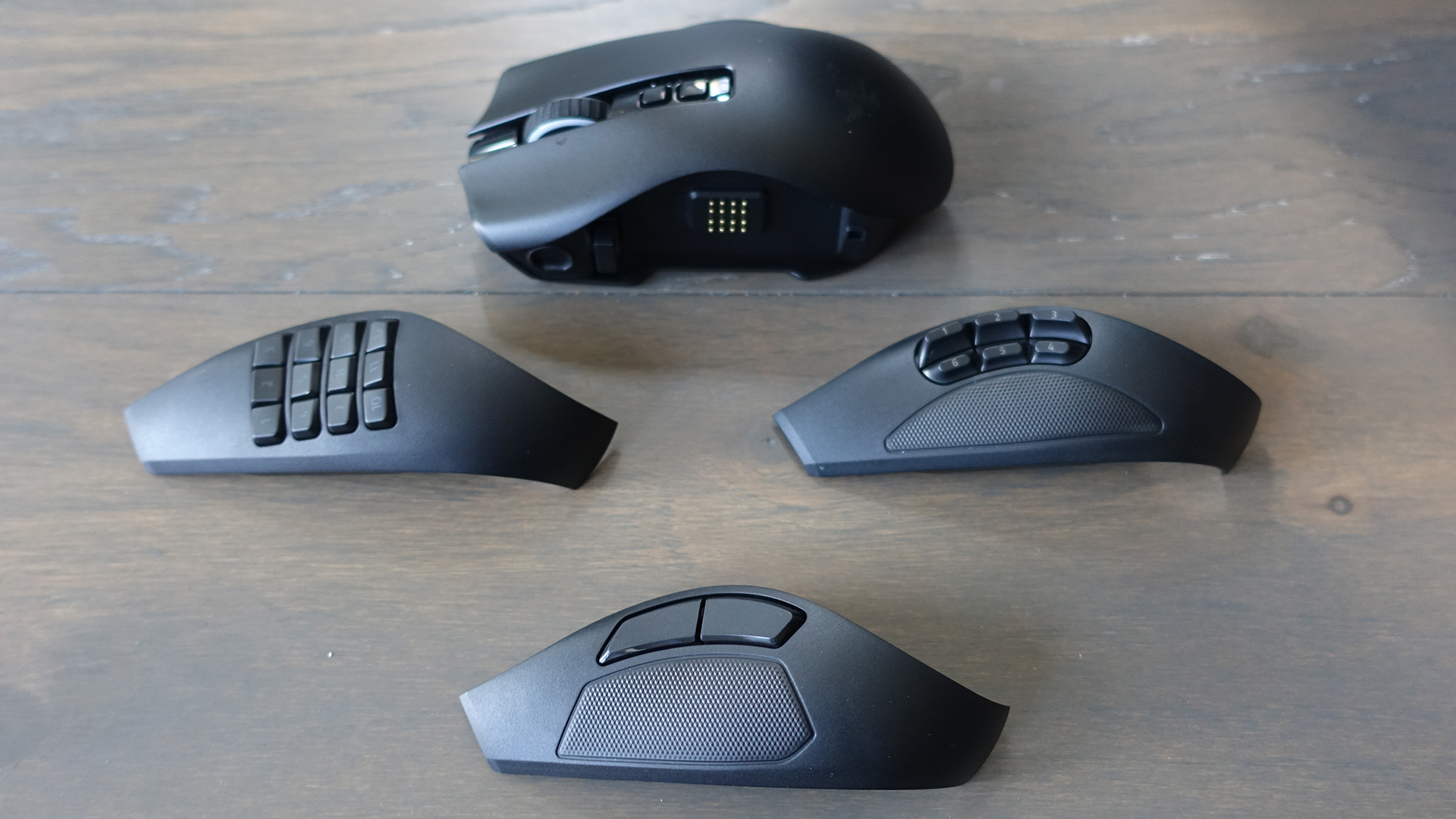

All three side panels are attached to the mouse body via magnets and a 3x4 array of metal contacts. The side panels snap into place easily. Taking them off requires hooking your fingers under a gap on the bottom of the mouse and pulling. Once the side panels are on, they really feel like they're part of the mouse, not a modular bit of plastic grafted on. Underneath the side panels is a slot to hold the USB dongle, making it easy to pack up the mouse and go.
While the side plates are modular, the rest of the Naga Pro isn’t. There are no additional weights or removable panels to change the overall shape of the mouse, like the similarly priced Logitech G502 Lightspeed. Razer focused on the swappable plates. But as a person with bigger hands, I found the Naga Pro very comfortable on a day-to-day basis.
Gaming Performance of the Razer Naga Pro
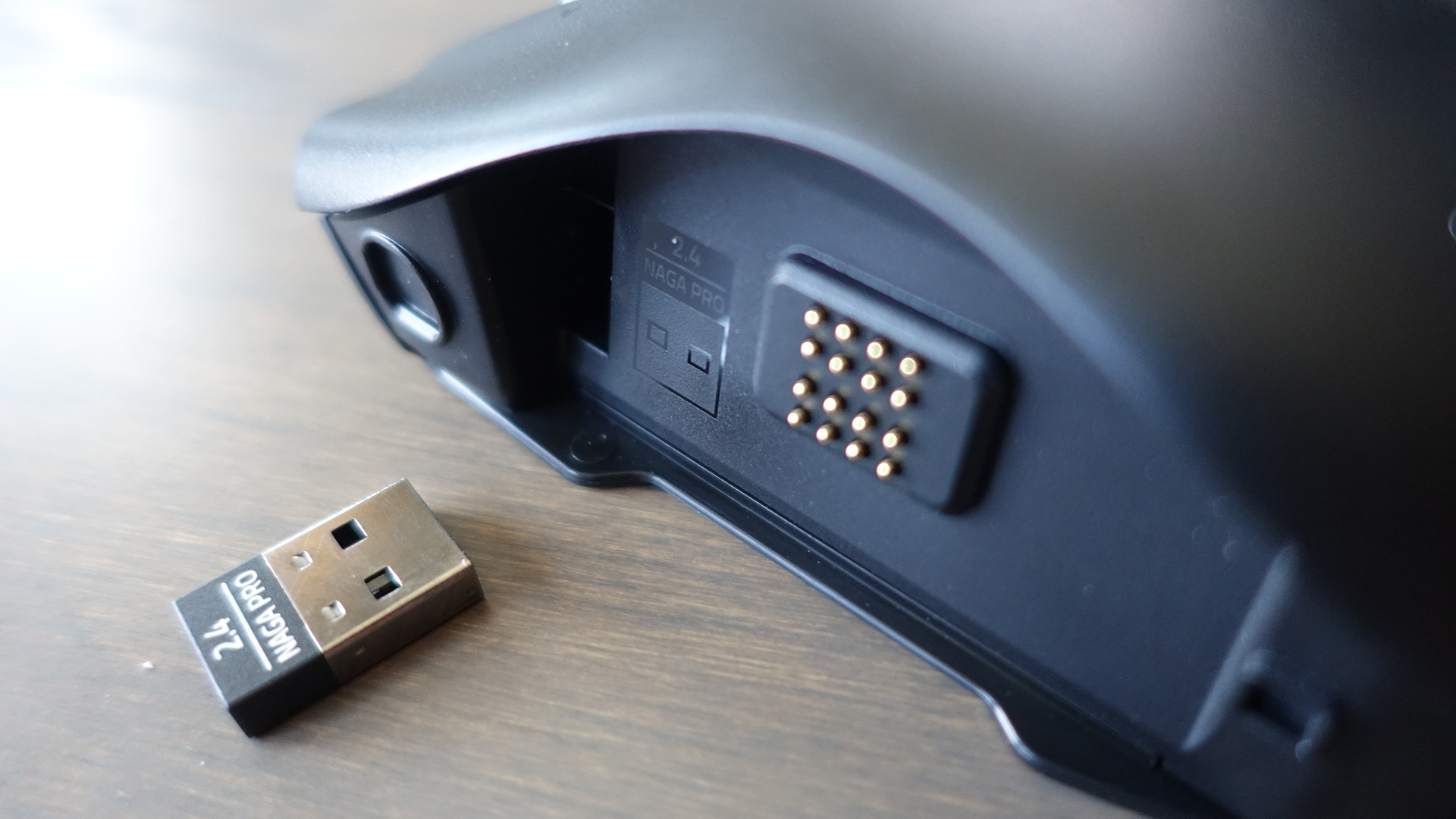
You can swap the Naga Pro's connection between wired, Razer HyperSpeed dongle and Bluetooth on the fly via the bottom switch. I generally used the HyperSpeed connection. I had no problems with tracking or connection, even with the dongle sitting on the rear of my PC. I walked away from my PC for a good 12 feet testing the connection and didn't have any problems, so if you're gaming on a big-screen TV or projector, the Razer Naga Pro will still do you right.
The Razer Naga Pro has a ton of changes and improvements under the hood, aimed at gaming performance. You can set the Razer Focus+ optical sensor (which was made with the help of Pixart) to work with up to five sensitivity stages. Using the mouse’s two sensitivity buttons, you can set the Naga Pro to 100-20,000 CPI, a massive range for any gaming mouse. The sensor also works at a max velocity of 650 IPS and max acceleration of 50g.
I played around at 1,700 CPI with a higher end at 3,200 CPI when I needed to move quickly from monitor-to-monitor. I didn't notice any tracking issues at the various testing ranges. I played in a few strategy games, including Wasteland 3 and A Total War Saga: Troy. The PTFE feet allowed the mouse to slide right across my mouse pad with nary a bump.
The left and right mouse buttons on the Naga Pro use Razer Optical Mouse Switches. Razer boasts that these switches are faster than normal mechanical switches, less likely to corrode or have unintended clicks and also durable up to 70 million clicks. I can tell you that both primary mouse buttons have a snappy click to them, and don't require much weight to activate. I've been suffering with a failing Logitech G Pro Wireless that tends to double-click more often these days, so the clean, solid clicks of the Naga Pro feel great.
The six-button side panel felt the best. The height of the buttons helped me know which one I was pressing, plus they depress with a satisfying click. You do have to actually press them though, as opposed to lightly feathering them. I used the six-button side panel for Horizon Zero Dawn, gaining quick access to all of Aloy's weapons and binding crouch and dodge roll to button 5 and 6. It was a swimmingly sublime experience. Combined with the Naga Pro’s precise sensor, Aloy was shattering armor off of machines like an absolute champ.
I tested the 12-button panel in World of Warcraft and Final Fantasy XIV. It worked well in both games, allowing me to hit my basic rotation in either title without moving my hand from WASD. The issue is in that lack of button differentiation I mentioned before. It feels muddy around the middle row, especially 5, 6, 8 and . I found I had a number of missed inputs in both games. On a run, I'd be mostly fine, only to accidentally hit 6 instead of 9, or 5 instead of 6, messing up the rotation.
I also wish the buttons in the 12-button panel were a little more rigid. As it stands, you can wiggle them a bit without actually pressing them, leading to a somewhat spongy feel. Cleaning up the 12-button layout would've taken this excellent mouse to perfect territory.
Battery Life
Razer claims up to 150 hours battery life without RGB lighting and when using a Bluetooth connection. When using the wireless dongle, that figure drops to 100 hours. I wasn't able to drain the mouse from 100% to dead during the review period, but with RGB lighting at max brightness and HyperSpeed wireless mode, I found a power drain of around 3% per hour, which would work out to around 33 hours of battery life if the rate sustained.
Software for Razer Naga Pro
Razer Synapse has grown over the years into a very robust software for customization. The mouse module on the latest version, Synapse 3.5, turns the Razer Naga Pro into a beast of a product.
The customize page lets you program every button on the mouse, minus the profile button, connection switch and left click, unless you assign the left click function to another button. The list of things you can assign to these buttons include mouse and keyboard functions, Windows shortcuts, other Razer device features, multimedia controls, program or website launches and macros. There's also the ability to set a Hypershift button, which lets you change button bindings with the press of a single user-set button.
Dive deeper and you'll find a host of performance tweaks as well. There's the aforementioned sensitivity options, the ability to change the polling rate, mouse surface calibration, low power mode and power saving options, and RGB lighting effects. You can combine these with the programmable buttons in profiles. Profiles are where Razer's software really starts to take off.
Button bindings are set for all of the different panels, with pages for each panel in a profile. I mentioned before that the panels are hot-swappable and I wanted to reinforce this: You can change between the panels at any time. As you attach a side panel to the mouse, it just switches to that panel's page. So you could have button 1 on the twelve-button have one function, while button 1 on the six-button panel doing something completely different. I don't know why you would do this, but you can.
You can have unlimited profiles on the Razer software and save five of them to the Naga Pro's onboard memory. Every setting is per profile for great flexibility. You can also link programs and games directly to each profile. With the 12-button panel for example, I set buttons 1 and 2 to mouse button 4 and 5 on one profile, while they were the 1 and 2 number keys on the second profile. I then linked that second profile to World of Warcraft and Final Fantasy XIV.
On Chrome, I could move back and forth in a web page—the default bindings for mouse button 4 and 5—but if I Alt-Tabbed to World of Warcraft, the bindings would switch to the 1 and 2 number keys, giving me access to my Paladin's primary abilities. This customization was helpful with multitasking. Additionally, the Razer Focus+ optical sensor made with Pixart has Smart Tracking, which allows the mouse to automatically calibrate itself across different surfaces. Alternatively, you can jump into the Synapse software and calibrate surface tracking manually. Razer also touts Motion Sync, which syncs the mouse signal to the PC polling rate, allowing for smoother, more consistent movement from the mouse itself.
Razer Synapse is just great software from top to bottom, probably my favorite PC accessory software available. With the addition of a ton of buttons and the ability to change between panels, it only got better.
Bottom Line
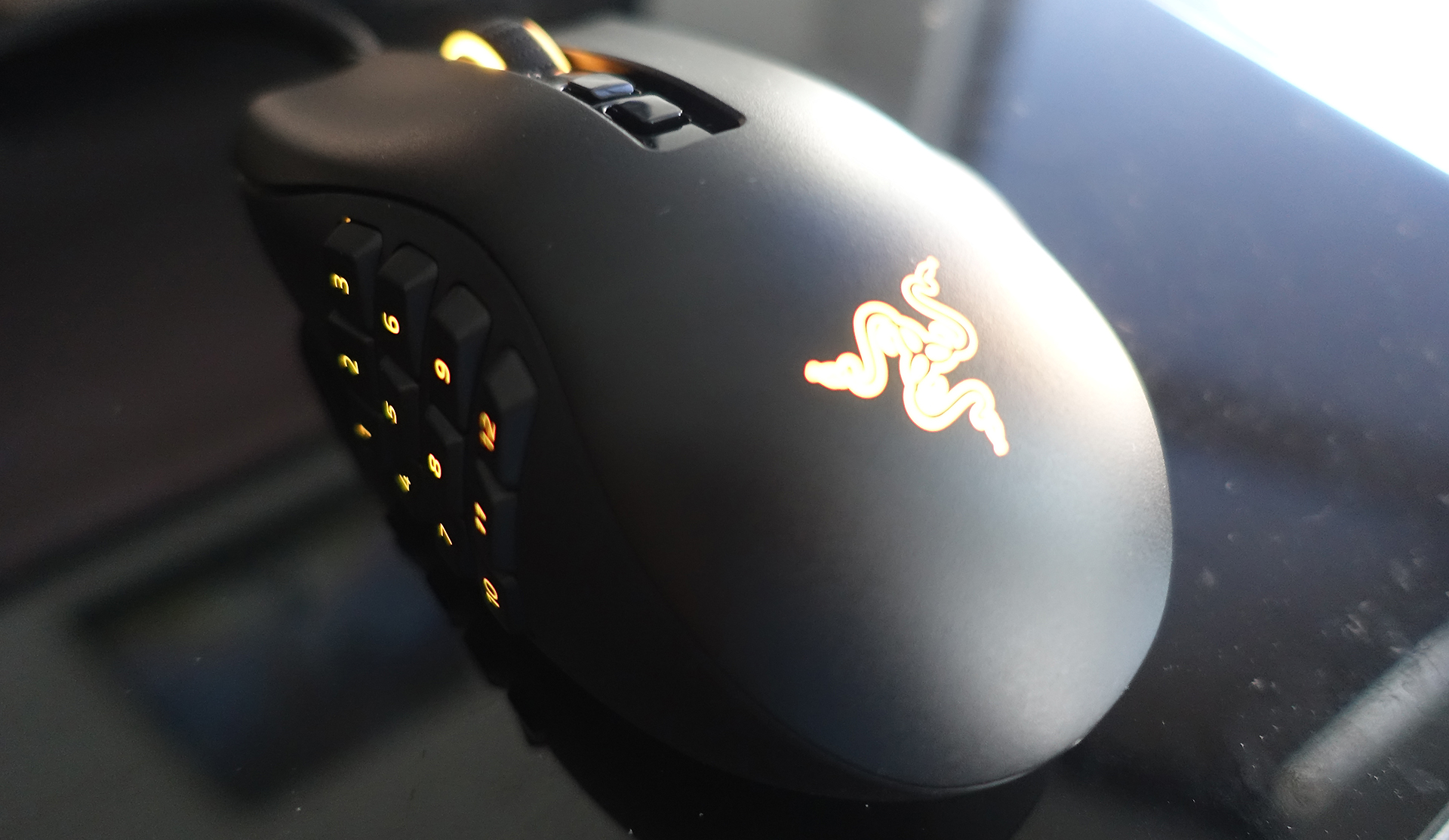
The Razer Naga Pro is an excellent successor to the entire Naga line. When you’re not in an MMO title or working Photoshop, you can drop the 12-button layout for something less intense. If you just want two buttons for easy web-browsing, you can do that. If your gaming experience might be better with six programmable buttons, the Naga Pro is here for you.
In 11 years, Razer hasn't quite figured out how to make the 12-button configuration feel great, but that's a small drawback to having all this power at your fingertips. It's such an elegantly designed mouse otherwise, and it'll likely be my workhorse mouse for the foreseeable future.
But $150 is a steep price to pay, even for a wireless MMO mouse. If you don't need a wireless version, the more affordable Razer Naga Trinity does most of what this mouse does in wired form. And if you're willing to live without the full 12-button layout and swappable panels, then something like the wireless Logitech G604 Lightspeed ($95) — which the Naga Pro's 6-button panel seemingly cribs from — will be more worth your while. With the Naga Pro you're paying for Razer's engineering magic. But combined with Razer's great Synapse software, you have a mouse that can do pretty much anything. That’s pretty hard to resist.